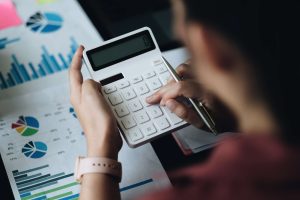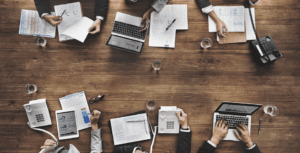
As a small business, it’s crucial to maintain a fixed asset register. This register serves as a comprehensive record, detailing all the information about each asset your business owns. Not only does it help in tracking the value and condition of your assets over time, but it also plays a vital role in financial management, ensuring accurate depreciation calculations.

Church Balance Sheet Template
That part of a manufacturer’s inventory that is in the production process but not yet completed. This account contains the cost of the direct material, direct labor, and factory overhead in the Travel Agency Accounting products so far. A manufacturer must disclose in its financial statements the cost of its work-in-process as well as the cost of finished goods and materials on hand. That part of the accounting system which contains the balance sheet and income statement accounts used for recording transactions. You should consider our materials to be an introduction to selected accounting and bookkeeping topics (with complexities likely omitted). We focus on financial statement reporting and do not discuss how that differs from income tax reporting.

Monitoring Your Company’s Financial Position
The amount is supported by the vendors’ invoices which had been received, approved for payment, and recorded in the company’s general ledger account Accounts Payable. Since no interest is payable on December 31, 2024, this balance sheet will not report a liability for interest on this loan. The general ledger account Accumulated Depreciation will have a credit balance that grows larger when the current period’s depreciation is recorded. As the credit balance increases, the book (or carrying) value of these assets decreases. The line buildings and improvements reports the cost of the buildings and improvements but not the cost of the land on which they were constructed. For financial statement purposes, the cost of buildings and improvements will be depreciated over their useful lives.
Liabilities
- Liabilities (and stockholders’ equity) are generally referred to as claims to a corporation’s assets.
- The balance sheet shows financial position; the income statement shows performance over time.
- At a corporation it is the residual or difference of assets minus liabilities.
- If you are preparing a balance sheet for one of your accounting homework problems and it doesn’t balance, something was input incorrectly.
- Land refers to the land used in the business, such as the land on which the production facilities, warehouses, and office buildings were (or will be) constructed.
- Analyzing all the reports together will allow you to better understand the financial health of your company.
For example, you can get an idea of how well your company can use its assets to generate revenue. Maintaining your business’s financial health is a key component of long-term success. Utilizing tools like the balance sheet and other financial statements will help you keep your finances in check. Your total liabilities are all of the basic balance sheet long-term debts and financial obligations your company owes to outside parties. In business, you need short- and long-term assets, with both tying up cash flow.

In this article, we will discuss different scenarios to understand how values are reflected in the balance sheet accounts. The price-to-book ratio is a metric that can be used to analyze the shareholders’ equity section. The next sections describe the structure of the balance sheet and how to read different parts of the balance sheet. They also discuss the important relationships between the other statements and the balance sheet, as well as how to read the notes. Now that you have an idea of how values are recorded in several accounts in a balance sheet, you can take a closer look with an example of how to read a balance sheet.

Balance sheet equation.
You can better manage their money by comparing planned and actual spending and figuring out how to better control costs. Knowing how to read and interpret both will empower you to make better financial decisions and set your business on the path to success. Not only will you need to know this figure, but potential buyers will want to know—and have the proof to back it up. Doing so allows you to see how your financial circumstances have changed and identify areas for opportunity and improvement. Sales performance management software helps manage quotas, improve productivity and increase revenue. Looking back at a previous sheet in a different layout can make locating the information you need challenging.
- Since goodwill impairment is a value judgment, it is important to read the goodwill with notes section of the balance sheet.
- The term owners’ equity is mostly used in the balance sheet of sole proprietorship and partnership form of business.
- It is worth looking into if you are not already using software, as it can save time and money.
- Property, Plant, and Equipment (also known as PP&E) capture the company’s tangible fixed assets.
- The balance sheet equation follows the accounting equation, where assets are on one side, liabilities and shareholder’s equity are on the other side, and both sides balance out.
Accumulated Depreciation is a long-term contra https://rentahybrid.co.za/first-in-first-out-fifo-method-in-perpetual/ asset account (an asset account with a credit balance) that is reported on the balance sheet under the heading Property, Plant, and Equipment. As you can see, the report form presents the assets at the top of the balance sheet. Beneath the assets are the liabilities followed by stockholders’ equity. It is also convenient to compare the current assets with the current liabilities.
]]>